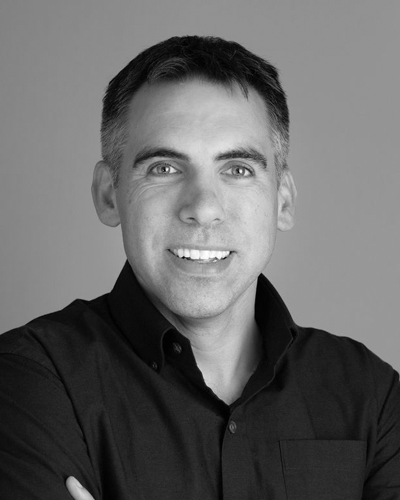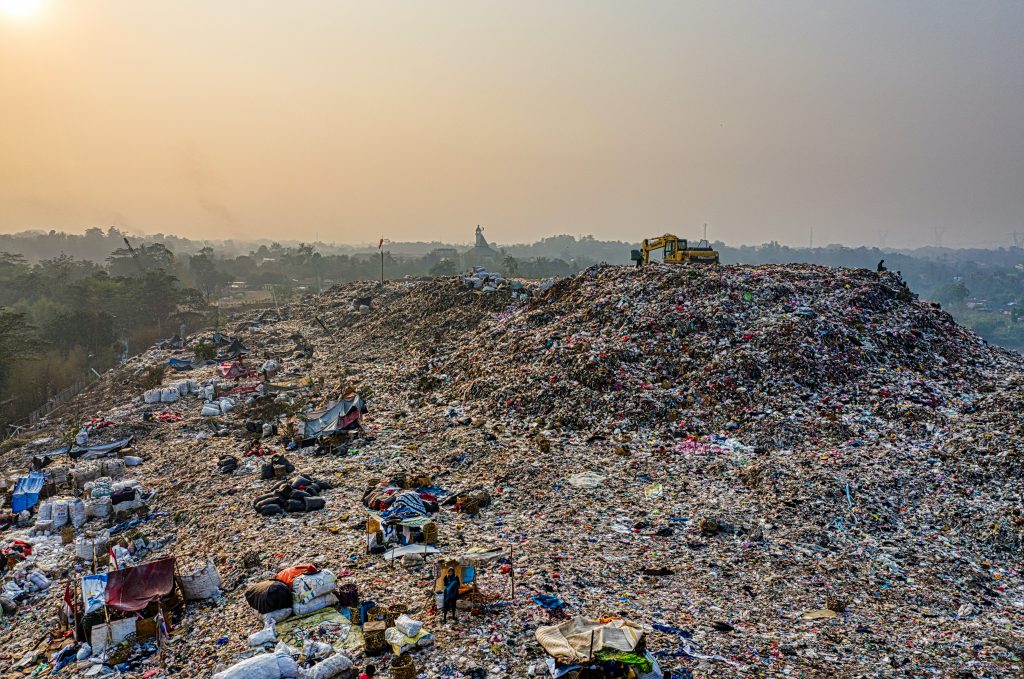Climate Now Episode 71
October 17, 2022
An electrifying look at the future of steel
Featured Experts

Adam Rauwerdink
SVP, Business Development. Boston Metal

Adam Rauwerdink
SVP, Business Development. Boston Metal
Dr. Adam Rauwerdink is the senior vice president of business development for Boston Metal. Adam received his PhD from Dartmouth in engineering, and worked on energy storage solutions at SUSTAIN X and Vionx Energy before joining Boston Metal in 2017.

Rebecca Dell
Industry Program Director, ClimateWorks Foundation

Rebecca Dell
Industry Program Director, ClimateWorks Foundation
Dr. Rebecca Dell is the Program Director, Industry at ClimateWorks Foundation. Previously, she worked at the U.S. Department of Energy in the Obama administration, where she coordinated implementation of President Obama’s Climate Action Plan and was a lead analyst and author of the U.S. Quadrennial Energy Review. Before her federal service, Rebecca was a scientist at the Scripps Institution of Oceanography, studying the interaction between the ocean and land-based ice sheets like those in Greenland and Antarctica. She has a Ph.D. in climate science from MIT.
In this Episode
For some sectors of our economy, electrification as a decarbonization strategy is a whole lot easier said than done. Take the steel industry – which is responsible for 11% of global CO2 emissions. A large part of those emissions come from the ‘coking’ process – where coal-fired furnaces burning at up to 1,100 degrees Celsius (2,000 degrees Fahrenheit) are used to break the bonds between iron and oxygen in the ore materials used to make steel. Driving this reaction with electricity, instead of a coal furnace, is an enormous challenge – but one that Boston Metals are taking the lead on.
Climate Now sat down with Adam Rauwerdink, senior vice president of Boston Metals, to better understand the landscape of developing clean steel technologies, and why the electrification process they are developing – “molten oxide electrolysis” – could be the decarbonization solution that the steel industry needs.
Related Media:


Climate Now: Jun 14, 2022
Concrete, steel and plastics: Paths to a greener industrial sector
Each year, we produce about 30 billion tonnes of concrete globally. That’s nearly 10,000 pounds, or more than 2 entire cars-worth of concrete, per person, per year. We produce enough steel to build more than 2700 Empire State Buildings annually. We produ


Climate Now: Feb 18, 2022
How to Scale Up Carbon Capture and Storage
From 2015 to 2020, the installed capacity of renewable electricity increased 50%, reaching nearly 12% of global electricity consumption. The number of electric vehicles sold in 2021 was 13 times more than in 2015, now making up nearly 9% of the new car sales.


Climate Now: Aug 6, 2021
Carbon Sequestration with Julio Friedmann
In order to limit global warming to 1.5 degrees Celsius, we must (in addition to reducing emissions) capture carbon and permanently store it where it cannot be released, a process known as carbon sequestration. So, what is currently being done to advance carbo


A Climate Change Primer Ep 2
How dirty are we?
Global greenhouse gas emissions reached a staggering 52 gigatons of CO2-warming equivalent in 2020. Our episode puts this number into historical context, parses our global emissions by country and economic sector, and delves into the key economic and demographic drivers of emissions worldwide.
Episode Transcript
Summary:
Rebecca Dell, Senior Director Industry for ClimateWorks Foundation, sets up the episode by telling us why steel is hard-to-abate. (0:20) “Why is steel the highest emitting industry? Because steel is fantastic… It’s strong, it’s stiff, it’s durable…It has a wide variety of valuable thermal and electrical properties. “
And because it’s so “fantastic,” it is used for so many applications, including some integral tools in the climate solution. The average wind turbine is made of 80% steel, for instance.
1:30 – Rebecca then introduces us to the start-up company, Boston Metal, that is working to produce a zero carbon emission steel by electrifying the process of breaking bonds between iron and oxygen (a process that otherwise uses coal-fired furnaces burning at up to 1,100 degrees Celsius (2,000 degrees Fahrenheit).
We spend the bulk of the episode talking with Adam Rauwerdink, the senior vice president of business development for Boston Metal.
At 6:26, Adam tells us about the different electricity-driven processes being tested to produce steel, including the “molten oxide electrolysis” approach used by Boston Metal
At 13:32, Adam describes Boston Metal’s go-to market strategy. “We’re not intending to be a steel maker…We’ll work with steel makers who would be our direct customers.”
In summary: Steel production is not going away anytime soon so to decarbonize the planet, we have to figure out a way to decarbonize steel.
Introduction
[00:00:00] James Lawler: Welcome to Climate Now, a podcast that explores and explains the ideas, technologies, and practical on the ground solutions that we will need to address the global climate crisis and reach a net zero future. I’m James Lawler, and today we’re going to talk about steel.
Why steel is hard-to-abate
[00:00:19] Rebecca Dell: Why is steel the highest emitting industry? Because steel is fantastic. Steel is so great. I mean, think about it, like it’s strong, it’s stiff, it’s formable, it’s durable. It has a wide variety of valuable thermal and electrical properties. But a typical modern steel mill will probably emit between two and two and a half tons of CO2 per ton of steel. Every steel mill on Earth makes more CO2 than steel.
[00:00:47] James Lawler: That is Rebecca Dell, the industry program director at ClimateWorks Foundation, from our episode with her on decarbonizing the steel, cement, and chemical industries. We can’t recycle our way out of the steel production CO2 problem, according to Rebecca. That is because we already recycle about 85% of steel.
[00:01:07] Instead, we need an alternate way to power the energy-intensive process required to convert iron ore into steel. Currently, the industry relies on coal-fired furnaces, but other technologies could replace fossil fuels to create the energy required to produce steel. Back to Rebecca:
[00:01:25] Rebecca Dell: You still have to do that chemical reaction where you pull the oxygen and the iron atoms apart. There’s a startup company called Boston Metal that is trying to use electricity directly to do this, and so basically you take a bunch of this iron oxide, you get it hot enough to melt it, and then you just put an enormous electric field across it, and the electric field is so strong that it just directly pulls apart the iron and the oxygen.
[00:01:53] So that’s one option. That might be a really good option, but it’s what we call a pre-commercial technology. That’s a technology that’s still in development.
Introduction to Adam Rauwerdink, senior vice president of business development, Boston Metal
[00:02:01] James Lawler: With us today is Dr. Adam Rauwerdink, senior vice president of business development for that company rebecca just mentioned, Boston Metal, which is working to help decarbonize the steel sector.
[00:02:11] Adam joined us to answer some of our questions about this pre-commercial technology. How far along is it and might we see its commercial adoption anytime soon? Adam has been in the clean tech industry for more than a decade. He received his PhD from Dartmouth in engineering, and worked on energy storage solutions at SUSTAIN X and Vionx Energy before joining Boston Metal in 2017.
[00:02:32] We’ll start the episode with an overview of the current state of the steel manufacturing industry and its emissions, before diving into the key methods available to reduce steel production emissions. We will then walk through the business case for Boston Metal’s solution, before wrapping up our discussion with a few closing words from Rebecca, on what she thinks is the most likely scenario for decarbonizing the steel industry. So let’s dive in.
[00:02:56] Adam, it’s great to have you on the podcast today. Thank you for joining us.
[00:02:59] Adam Rauwerdink: Yeah, thanks James. Appreciate it.
[00:03:01] James Lawler: So Boston Metal is a startup that’s working to produce zero carbon emission steel. I wonder if you could tell us what percentage of global human-caused emissions is attributable to the steel industry today?
Emissions from the steel industry
[00:03:11] Adam Rauwerdink: Yeah, those numbers vary quite a bit, but kind of the round numbers we generally talk about is last year in 2021 there were two billion tons of steel produced, and something on the order of three and a half gigatons of CO2 that was emitted as part of that, or produced as part of that. So the numbers vary in terms of percentage, but eight to 10, eight to 11% of global CO2 comes from steel production. That’s generally the numbers that we see.
[00:03:38] James Lawler: Wow. So huge amounts. I wonder if you could set the table for us in terms of what is the traditional steel manufacturing process? How does it work? Why is it emissions intensive? And then what are the options that are currently in development that offer an alternative green production pathway?
How Steel is traditionally made
[00:03:59] Adam Rauwerdink: Yeah, so the primary method of making steel, which is going from iron ore that you mine out of the ground to make new units of steel, the basic approach to that uses coal. It’s a coal-fired process. That’s where you’ll have the blast furnace and a few other sub plants around that to produce steel. That’s responsible today for about 70% of the steel that’s made, about 1.4 billion tons each year, and that’s the primary root of where most of those emissions come from.
[00:04:25] And that’s a process, the idea of using coal to convert iron ore into liquid iron, that’s something that’s really been there since the Iron Age. When you look at heavy industries that are entrenched, you look at trying to electrify or decarbonize electrification or vehicle transportation, 100, 150 year old industries.
[00:04:42] Steel production’s been really a 3000 year old process. So that’s what we’re trying to change, and that’s where the core of Boston Metals technology is taking carbon out of that equation and instead using electricity. The other way that you really look at steel production today, the other 30% that’s not coal-fired is recycling.
[00:05:00] And that’s one of the great things about steel. You can really recycle it almost indefinitely. That’s an electricity-driven process. You take scrap steel remelt it, you’ll typically blend in some new units of iron as well to get the quality where you need it. And then if you do that with clean power, you can be at a very low CO2 intensity, but it’s only about 30% of steel, and there’s many limitations on why that can’t grow much beyond that.
Green steel technologies
[00:05:24] James Lawler: And so what are some of the green steel technologies that exist?
[00:05:29] Adam Rauwerdink: There’s some kind of interim approaches: take the blast furnace approach, try to still burn carbon, or consume carbon, but either change the form of carbon or strap on CCUS at the end of the approach to capture some of the CO2 that’s produced. As transitional approaches, you’re seeing interest in.
[00:05:49] But really, in terms of the permanent long-term solutions for reducing that 10% hopefully to zero, that’s gonna require fuel switching. So removing carbon, really the only energy source that’s gonna be able to hit this is electricity. And that’s when you then branch down and get into different approaches to how to use that electricity.
[00:06:07] So we take the direct approach, direct electrolysis on iron ore. The other approach that you’ll certainly hear about, and that’s being done today in Sweden and a few other spots, is using the electricity to make hydrogen.
[00:06:19] James Lawler: And what are the names for those different electricity-driven processes?
Boston Metal’s “molten oxide electrolysis” method for steelmaking
[00:06:22] Adam Rauwerdink: So certainly. Ours is called molten oxide electrolysis. But then the other approach, if you’re gonna use hydrogen, what you’re basing that on typically is a process called direct reduction, which has been around for about 50 years, has about 5% of the global steel production today that operates using natural gas. It’s more of a solid state process. So you use a high purity form of pelletized iron ore with natural gas, you convert that into kind of an iron sponge.
[00:06:49] You’ll then send that to a furnace, just like scrap, typically with scrap, re-melt that, and make that into steel. And so the hydrogen-based approach for steel is usually using electricity and electrolysis to produce hydrogen, using hydrogen instead of natural gas in a direct reduction approach, and then sending that to an arc furnace to be remelted and made into steel. So that’s the other approach. It’s kind of indirectly electrifying steel production.
[00:07:14] James Lawler: Got it. So the molten oxide approach, how does that work again?
[00:07:17] Adam Rauwerdink: Yep. So we’re doing electrolysis, not on water to get hydrogen, but on the iron ore directly. So kind of remove hydrogen as a middle man and, and do the electrolysis direct.
[00:07:27] So the inputs to our process are a low grade, mid grade basic iron ore and electricity. Those are the two inputs. The output is a molten iron coming off at 1500, 1600 degrees celsius, full molten iron that can be brought directly downstream. And since there’s no carbon in the process, the only emission is really oxygen that comes off.
[00:07:48] So at its core, it borrows very heavily from both how steel is made today, but also how aluminum is made today. So aluminum is produced using an electrolysis process, an oxide electrolysis process, different temperatures, different materials, different operating conditions, but in terms of how to produce steel or metals rather at million ton levels, it’s being done today using electricity and an electrolysis approach for aluminum.
[00:08:14] So we borrow heavily from that, we certainly borrow heavily from the steel industry, and then there’s a number of key innovations with the technology that make it possible.
[00:08:24] James Lawler: The steel industry consumes a massive amount of energy. It doesn’t sound like that’s necessarily going to change with this direct electricity approach. I imagine that your decarbonization technology is predicated on using renewable energy sources for electricity no?
[00:08:37] Adam Rauwerdink: I mean, one of the key things we talk about in terms of one of the potential barriers for us is just, we are dependent upon renewable electricity. We’re dependent on largely what has to be firm 24/7 renewable electricity.
[00:08:51] So there’s a few different ways we’re approaching that. You can look geographically at regions that have lots of hydro or nuclear or, you know, a varied mix of renewables. We also talk a lot with the big renewables developers who would bring together existing assets, new assets, contractual elements, energy storage, a whole array of solutions.
[00:09:11] But that is something that we are gonna be dependent upon, long term. And the pricing of electricity will be a key factor as well. If you look at the blast furnace route today, where coal is used, the energy source is coal. For every ton of steel that’s produced, you’re using about five to six megawatt hours of energy, but it’s coming as coal.
[00:09:31] For our process, when we’re at mature commercial scale, four megawatt hours is our target. That’s where we think we can get the technology to. So four megawatt hours of electricity per ton of steel that’s produced. When you think about that, at the 1 million or 2 million tons of steel per year a production plant, that suddenly becomes 500 megawatts to one gigawatt of base load demands.
[00:09:53] So you do need, even if it’s energy efficient per ton, when you start to talk millions of tons, you need huge amounts of renewables. And it has to be 24/7 base load supply. So that becomes a big constraint long term as we think about where the technology will be deployed, how we grow the market, or how we help our customer, the steel makers, grow the market.
[00:10:12] James Lawler: And what do you think the sources of those megawatt hours will be?
[00:10:15] Adam Rauwerdink: Really geographically dependent, I would say. So, and you know, from our perspective, we’re rather agnostic. The important part is that it’s considered clean. When you look at one of our plants, the scope one emissions will be zero. There’s no direct CO2.
[00:10:27] So it really comes down to that scope two, where is the electricity coming from? That’s the big driver. So four megawatt hours per ton times whatever the emission factor of your electricity source is, or the average emission factor.
Boston Metal’s potential challenges
[00:10:41] James Lawler: Talk to us about the technical challenges and economic challenges. What are sort of the main question marks on those two fronts, for the electrolysis and molten oxide approach?
[00:10:52] Adam Rauwerdink: So there’s kind of two different elements there, on a technical side. There’s just the overall scale of the technology that you’ve demonstrated it at. And then there’s one of the core enabling technologies, which is an anode technology, a metallic inert anode.
[00:11:05] So those are the two areas of core focus. So the inert anode technology, which came out of when this company was founded in 2012, that was technology that had been developed and patented at MIT, at the university level. Boston Metal now has the exclusive license to that technology. And we’ve taken it from really the laboratory level where you’re making an anode the size of your thumbnail and making a few grams of metal, taking that up to an anode that’s the size of a small table, making tons of metal.
[00:11:32] And then as we move forward as a company, we’ll be making cells that use multiple of those large-scale anodes. So that’s really the core, central, technical challenge that we’re focused on is building larger reactors, and taking that anode technology and scaling it up.
[00:11:46] James Lawler: And so how many tons of steel have you made so far using this method?
[00:11:51] Adam Rauwerdink: Not sure about the exact number, but in the 10s of tons.
[00:11:54] James Lawler: Got it. So one of the challenges that we’ve learned about as we’ve talked to other scientists and engineers involved in scaling industrial chemical processes is that while something might work on the lab bench or in a very small prototype, things can start to break down as you have unexpected issues, as you start to scale the experiment, you have other physical chemical processes that start to matter.
[00:12:15] Are there concerns around that phenomenon when it comes to metallic anode technology of the kind you’re describing?
[00:12:21] Adam Rauwerdink: It’s a good question. And so there’s some things that are very similar at the lab scale and at the full industrial scale, and as you said, there’s many new characteristics that get introduced.
[00:12:30] So some of the electrochemical conditions are very similar. So the results that we’ve been able to show at the lab scale transition very, very well as we move up in scale. As you go up in scale though, you do introduce some new factors. So, things like mechanical properties of an alloy, how it behaves at temperature over time, how it holds its shape and size.
[00:12:48] That’s something where at the lab scale, it really doesn’t matter. It’s very, very small. Once you go to very large forms of anodes, that becomes a design constraint, something that you have to model, something that you have to design. Also, something where you have to think about the manufacturing processes to make the anodes and make the materials so that that’s scalable as well.
[00:13:08] So that’s one prime example of where mechanical characteristics of an alloy really doesn’t influence you much at the lab scale, but becomes a very core element of your engineering when you go industrial.
Boston Metal’s market strategy
[00:13:19] James Lawler: So you are the senior vice president of business development at Boston Metal, and so my next question is maybe more pertinent to what you might be thinking about day to day, but you tell us, how do you think about entering the market with this new product?
[00:13:32] Adam Rauwerdink: Yep, so it kind of brings in what our business model is. So yeah, we’re not intending to be a steel maker, so we’ll license the technology, and we’ll provide the anode technology, so we’ll manufacture the anode supply. Those, they last several years, end of life we’ll take them back. But primarily we’ll work with steel makers who would be our direct customers to design and have them build plants using the technology.
[00:13:54] 2025 is kind of the inflection point we talk about. So in 2025, we’re targeting to have our first multi-cell demonstration plant online, likely somewhere here in the US. And that would be kind of the commercial validation point where you’d then be able to build larger plants by adding additional cells.
[00:14:11] But that’s kind of the commercial proof point that’s ahead of us.
[00:14:14] James Lawler: Interesting. And what tonnage of steel does one have to produce to enter the commercial steel market? What is that threshold?
[00:14:21] Adam Rauwerdink: So for us it’s much more the fact that it’s a modular technology, it’s proving out, for us it’s five different cells at commercial scale, making a few thousand tons per year, but proving out all the building blocks that you would need to go to a million or two million ton production from a plant just by adding additional cells.
[00:14:39] So that’s really what our demo plant focuses on, is large scale individual cells, several of those operating next to each other in series. And that validates all the steps to just scale up by adding additional cells.
[00:14:53] James Lawler: If you had to project forward, so in 2025 you have this first demonstration plant up and running. Where do you think you guys are In 10 years?
[00:15:02] Adam Rauwerdink: Yep, the goal then is to, by kind of 2026 is that inflection point where you really start to ramp. So ramping very, very aggressively by the end of this decade and certainly the 2030s we see as a huge year or decade for a transition of the steel industry.
[00:15:17] Our goal is to be the dominant player by the time you get to decade. And that’s when, if you’re gonna hit carbon neutral by 2050 for the steel industry, the 2030s are gonna be an explosive period of growth and change.
[00:15:29] James Lawler: Fascinating. That’s so exciting. Well, Adam, thank you so much for joining us. This has been really interesting and very exciting days for Boston Metal.
[00:15:36] Adam Rauwerdink: Thank you very much. I always have to say at the end of these that we are hiring like crazy. So when I joined, we were eight. Now, we’re eighty-plus. And so anyone that’s listening that wants to make a big impact and help eliminate 10% of CO2, please take a look.
[00:15:50] James Lawler: Before we end today’s podcast, I wanna turn back to Rebecca Dell from Climate Works, about her predictions for which of these technologies will be the first to have a real impact.
Rebecca Dell’s prediction for the future of steel
[00:15:59] Rebecca Dell: The way that I usually think about it is that the hydrogen route, that’s the one that’s closest to being ready to go. So I think five years from now we are going to have hydrogen steel mills that are producing commercial quantities of hydrogen-reduced steel, and people are gonna be out there making them into cars and products and everything. That’s actually pretty close to being ready to go.
[00:16:25] However, it requires more energy than the electrolysis-Boston-Metal-type route. And these are very, very energy intensive processes. And so if we can get the electrolysis route working soon, that’s gonna be even more attractive because you can save so much money on your energy.
[00:16:47] So I think it’s probably gonna end up being a combination of those two, also supported by better, higher quality recycling with more material efficiency.
[00:17:01] James Lawler: That was Dr. Rebecca Dell, industry program director at ClimateWorks Foundation. Earlier you heard from Dr. Adam Rauwerdink, senior vice president of business development at Boston Metal, about how we might decarbonize the steel industry.
[00:17:13] The status quo is not tenable, given that steel production has more than tripled over the past 50 years, and there is no reason to believe that trajectory won’t continue. That’s because steel is presently an integral part of the climate solution. The average wind turbine is made of 80% steel. It is used in everything from solar power systems to electric vehicle generators and motors and cars and transmission lines.
[00:17:34] To decarbonize the planet, we’re going to have to figure out a way to decarbonize steel. That’s it for this episode of the podcast. For more episodes, videos, or to sign up for our newsletter, visit www.climatenow.com. We hope you can join us for our next conversation.
[00:17:51] Climate Now is made possible in part by our science partners, like the Livermore Lab Foundation. The Livermore Lab Foundation supports climate research and carbon cleanup initiatives at the Lawrence Livermore National Lab, which is a Department of Energy applied science and research facility. More information on the foundation’s climate work can be found at www.livermorelabfoundation.org.